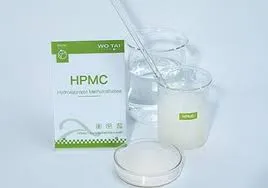
Samh . 13, 2024 09:28 Back to list
hydroxypropyl methyl cellulose cas no
Understanding Hydroxypropyl Methyl Cellulose Properties, Applications, and Environmental Considerations
Hydroxypropyl Methyl Cellulose (HPMC), recognized by its CAS number 9004-65-3, is a cellulose-derived polymer that has garnered significant attention in various industries due to its unique properties. As a non-ionic, water-soluble polymer, HPMC is widely used in pharmaceuticals, construction, food, and personal care products. This article explores the properties of HPMC, its applications, and potential environmental considerations.
Properties of Hydroxypropyl Methyl Cellulose
HPMC is synthesized from cellulose, which is a natural polymer obtained from plants
. The modification involves the substitution of hydroxyl groups in cellulose with hydroxypropyl and methyl groups, which enhances its solubility in water and improves its performance as a thickening agent, emulsifier, and film-forming agent.One of the most notable properties of HPMC is its ability to form a gel when mixed with water. This characteristic is particularly valuable in creating viscous solutions, which are essential in various formulations. HPMC also exhibits excellent stability across a wide range of pH levels, making it suitable for diverse applications. Additionally, its low toxicity and biodegradable nature enhance its appeal, particularly in environmentally conscious industries.
Applications of HPMC
1. Pharmaceuticals HPMC serves as a crucial excipient in the formulation of tablets and capsules. Its gel-forming properties aid in controlling the release rate of active pharmaceutical ingredients (APIs), allowing for sustained or modified release formulations. HPMC is also used in ophthalmic preparations and as a binding agent in oral solid dosage forms.
2. Construction In the construction industry, HPMC is widely utilized as a thickening agent in cement, plaster, and tile adhesives. Its addition enhances workability, reduces water loss, and improves the adhesion properties of construction materials. Furthermore, HPMC contributes to the flexibility and durability of finished products, making it essential for modern construction methods.
hydroxypropyl methyl cellulose cas no

3. Food Industry HPMC is recognized as a food additive with the E-number E464. It is used as a thickening agent, emulsifier, and stabilizer in various food products. Its ability to enhance texture and prevent the separation of ingredients is particularly beneficial in sauces, dressings, and dairy products.
4. Personal Care Products In the cosmetics and personal care sector, HPMC is frequently employed in formulations like shampoos, lotions, and creams. Its thickening and film-forming characteristics improve the texture and stability of these products, enhancing the overall consumer experience.
Environmental Considerations
While HPMC is derived from renewable resources and exhibits low toxicity, it is essential to consider its environmental impact. As industries increasingly prioritize sustainability, the sourcing and production processes of HPMC should align with environmentally friendly practices. The biodegradability of HPMC is favorable; however, the potential for microplastic contamination in the environment from synthetic cellulose derivatives is a concern that warrants further research.
Additionally, as HPMC is used in various disposables, exploring alternatives or biodegradable replacements is crucial. The development of more eco-friendly synthesis methods could further enhance its sustainability profile.
Conclusion
Hydroxypropyl Methyl Cellulose stands out as a versatile polymer with numerous applications across industries. Its unique properties, such as water solubility, gel formation, and biodegradability, contribute to its widespread use in pharmaceuticals, construction, food processing, and personal care. As the demand for environmentally sustainable products grows, the ongoing development and optimization of HPMC will be vital in addressing both industry needs and environmental concerns. Through innovative approaches, HPMC can continue to thrive as a valuable ingredient while supporting sustainable practices in various sectors.
-
Unlocking the Benefits of HPMC Products: A Gateway to Versatile Applications
NewsAug.07,2025
-
Unleashing the Potential of HPMC Ashland: A Comprehensive Look
NewsAug.07,2025
-
Tile Bonding Cellulose: The Key to Superior Adhesion and Durability
NewsAug.07,2025
-
Hydroxypropyl Methylcellulose Powder: The Versatile Component in Modern Pharmaceuticals
NewsAug.07,2025
-
Hydroxyethyl Cellulose: The Versatile Solution for Various Industries
NewsAug.07,2025
-
Hydroxyethyl Cellulose (HEC): The Versatile Polymer for Various Applications
NewsAug.07,2025







